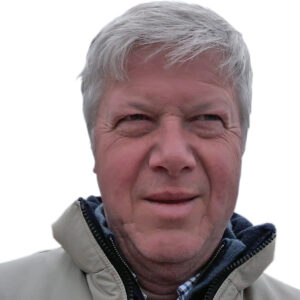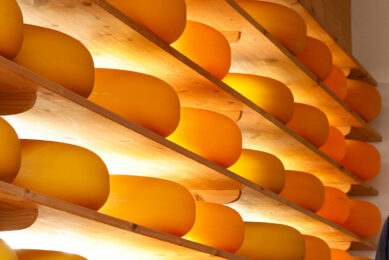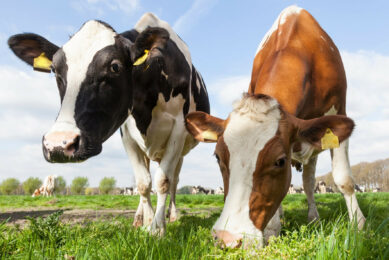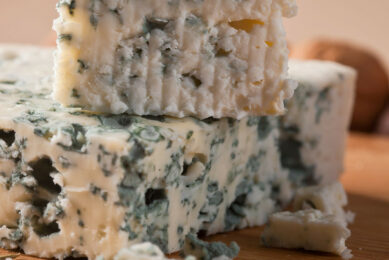France: Self-sufficient dairy farm aims for better profits
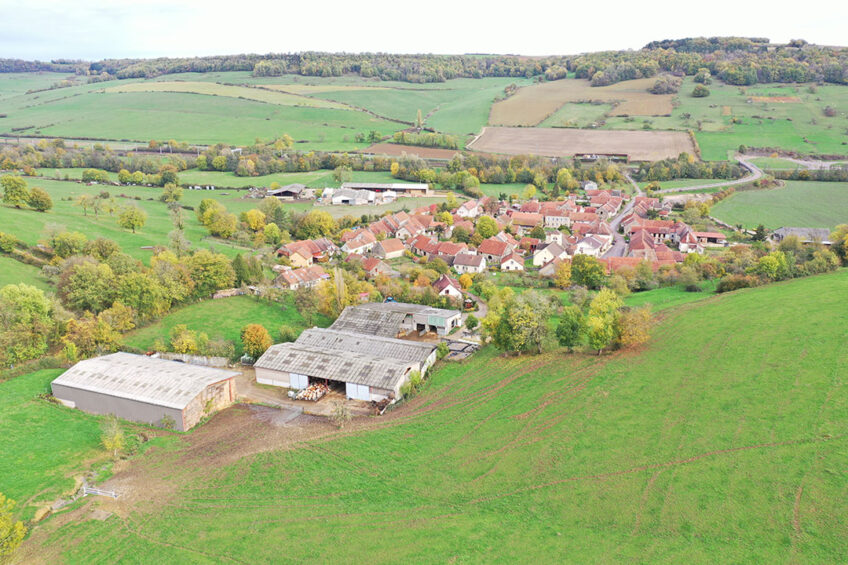
Located about 40 km east of Dijon close to the sources of the Seine river, the Belin farm in Burgundy, France, has always aimed for self-sufficiency and profitability with some investments. A strategy that Simon Belin, the third generation on-farm, intends to continue.
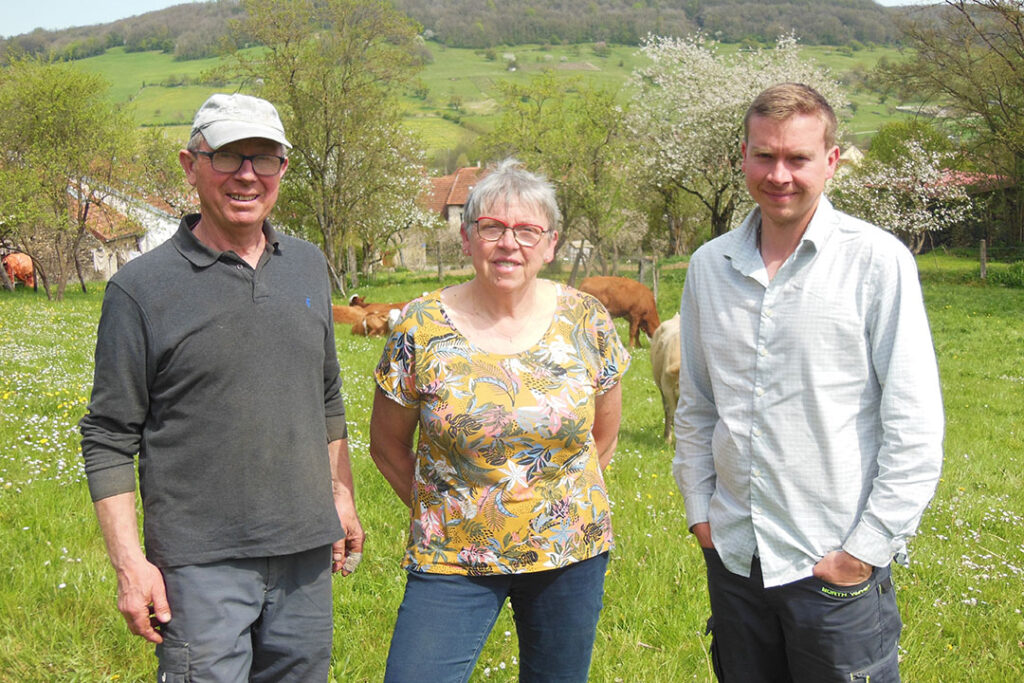
It is almost hidden behind the village church in a hilly landscape, the Belin farm is discreet at first glance. Its meadows have the enormous advantage of all having a water source. “My grandfather, Jean, started the farm with 15 dairy cows and 15 beef cows,” states Simon. After studying agricultural engineering in Dijon, Simon went to California for 2 years to work in a technology company for market gardening and has been an employee of the farm since his return in August 2021.
Simmental breed and organic production
After settling on the farm in 1980, Yves, Simon’s father, began the first investments with a 2×3 milking parlour inaugurated in December 1982 (one of the first in the region). It moved very quickly to 2×4 just 6 months later, then to 2×5 in 1998.
Investments were also made in buildings, with the construction of a first straw bedded area for 40 cows in 1988, followed by a second one in 1995 to represent today a total of 380 m2 for 64 feed rack places. The last investment was done in 2014 for a building to store straw.
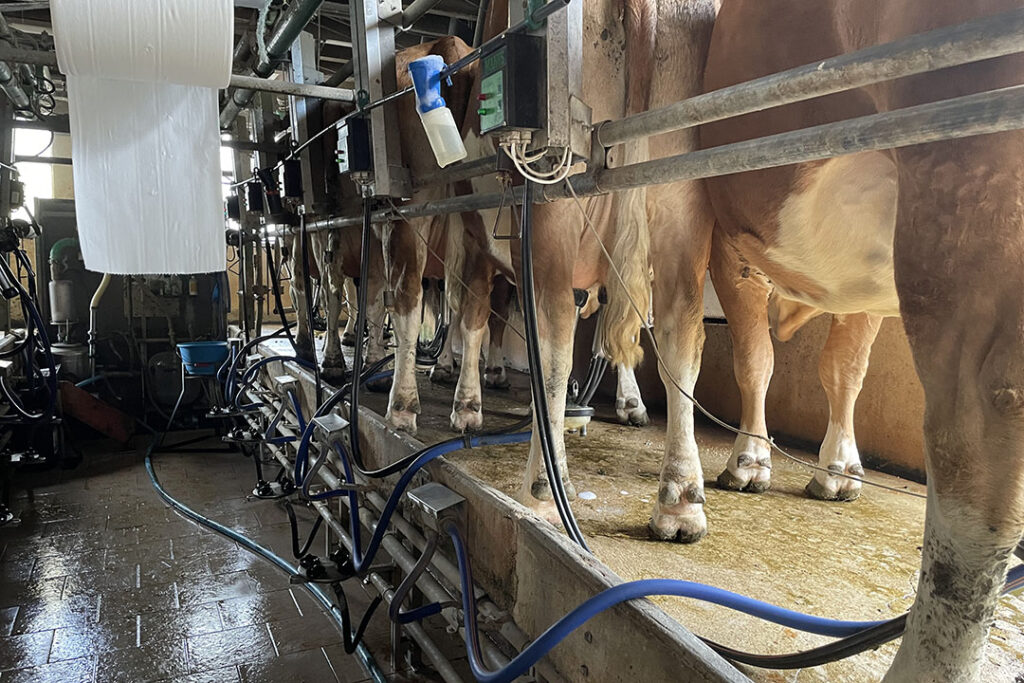
Choosing the French Simmental breed and organic milk production are today the 2 main technical levers of the farm. “The Simmental, the historical breed of the farm, is very popular in the region,” says Simon, who adds that male calves are better paid than for other breeds. “With less milk, the Simmental breed allows a similar income than with a specialised dairy breed,” adds Yves, who chose organic production 10 years ago for several reasons: ethical, the location of part of the meadows in a catchment area for water sources, and better milk price. “The price difference between organic milk and standard milk has gone from €80-€100/1,000 litres 10 years ago to €40-€50 today,” says Yves, adding that the milk price was at €452/1,000 litres in 2021 delivered to Biolait.
Grass area
All the natural meadows are located around the farm, the crops (wheat, artificial meadows, rapeseed, triticale, peas) are on the plateau at an altitude of 400 m.
“Our goal is that cows graze as much as possible from the beginning of April in order to reduce feed costs,” explains Simon during the visit. The herd’s milk production is generally at its lowest end of June (2,044 litres delivered every 3 days), with calving taking place from mid-April to mid-June, and at its highest in January (4,300 litres delivered every 3 days).
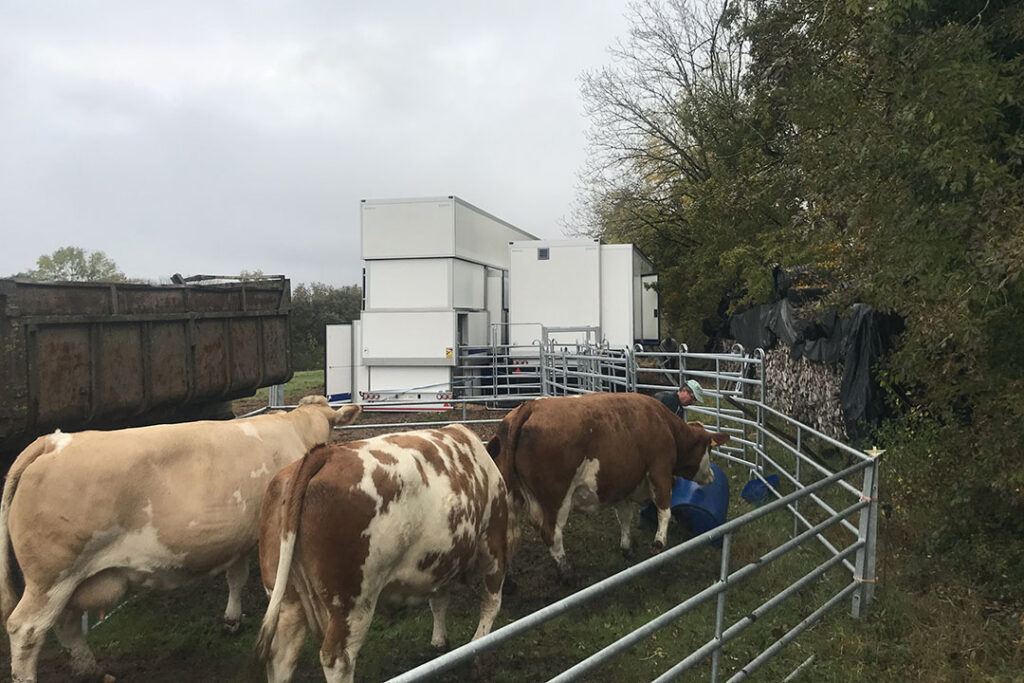
Harvested meadows consist of dominant clover or alfalfa and ryegrass and fescue. The forage area is valued in 3 ways: grass silage, hay and wrapping. All harvesting work is carried out by the intermediary of a Cuma, an agricultural cooperative society allowing farmers to buy and work on agricultural equipment in common.
“The first cut is ensiled, the second and third harvested in the summer as hay and the last cut wrapped, explains Simon, who adds that the cows’ ration is supplemented with a flour made on the farm with rolled cereals (barley, oats, triticale) plus peas.
According to a Galacsy report, which presents the technico-economical results of the farm in 2021, grass represented 97% of feed for heifers and 73% of cow feed. The milking cows receive around 3 kg/day of flour when they graze until a maximum of 4 to 5 kg/d depending on their production. Half of the flour is mixed with silage or hay and the other half distributed in the milking parlour.
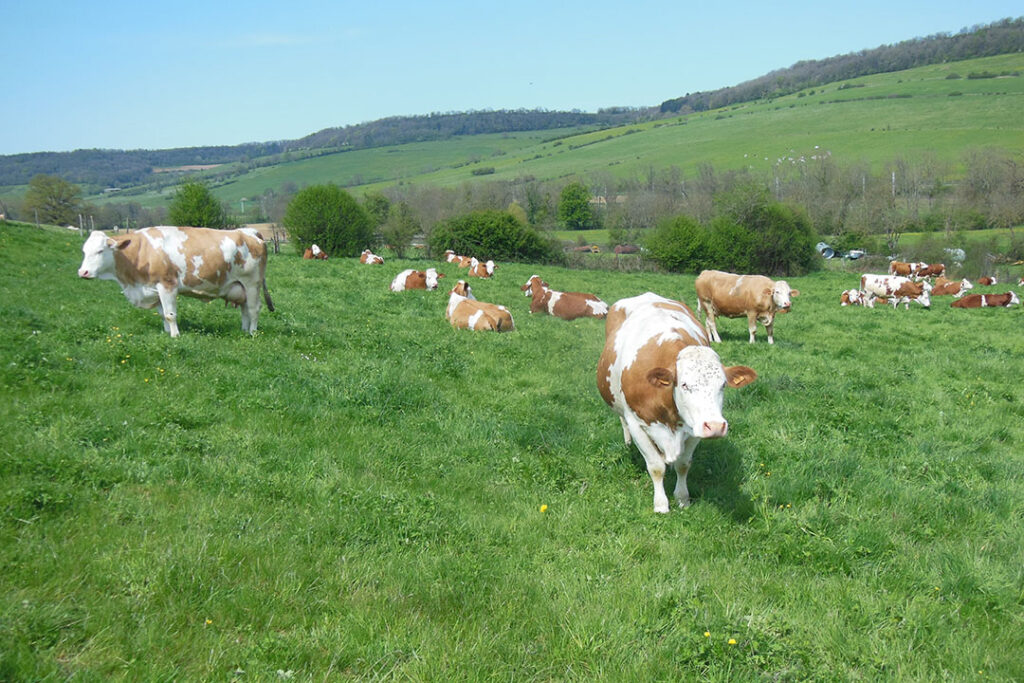
The selection strategy of the herd also aims to better valuate grass. “We choose insemination bulls that improve not only the rates (proteins and fat) but also the legs,” adds Simon.
Cheese processing, better profitability
It is also the search for better profitability that has led the farm to work with the ‘Boeuf Ethique’ mobile slaughterhouse since its creation in the summer of 2021.
“Our 6 first cows were slaughtered last October, with an average price of €4,40-4,45/kg carcass, instead of €3,95/kg for similar cows but sold to a local cattle dealer,” Simon states.
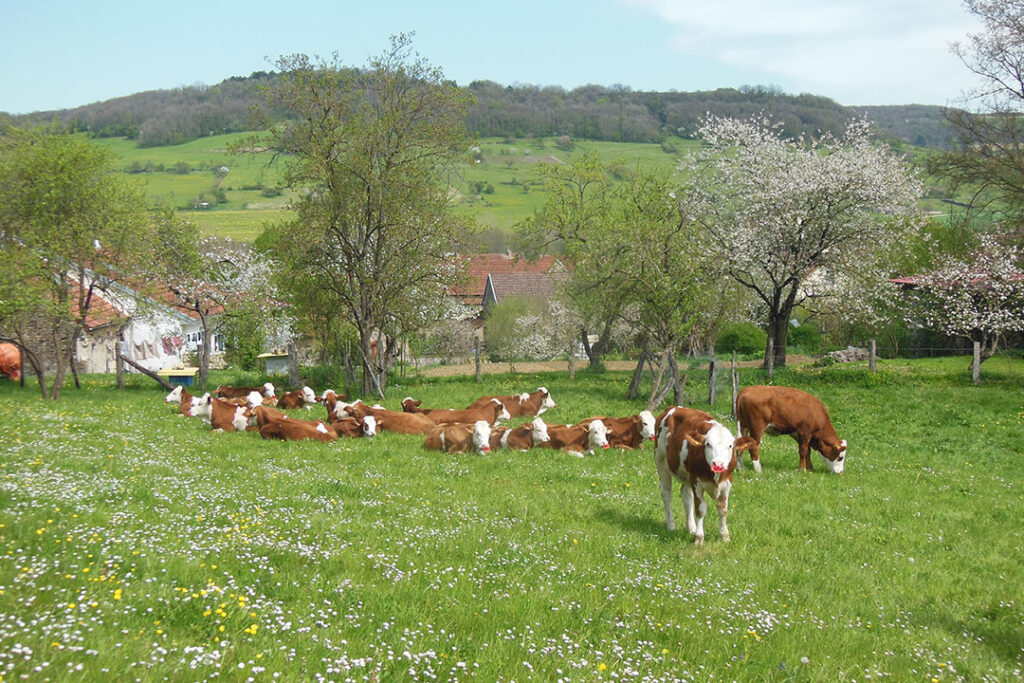
The next step in the development of the farm will be the takeover of the farm by 2023 by Simon and his older sister Elise, following the retirement of their parents.
“Our project is to invest in a cheese producing unit to valuate more the milk through a local brand,” explains Simon. Elise, currently the manager of a gardening store, will soon be trained in a cheese dairy in the neighbouring Jura region. “A further step will include the building of a grass drying barn by 2023-2024,” says Simon, whose strategy is to continue to aim for self-sufficiency and profitability of the family farm.
– With 300 million litres collected from 1,400 member farms, Biolait represents 30% of organic dairy collection in France
Join 13,000+ subscribers
Subscribe to our newsletter to stay updated about all the need-to-know content in the dairy sector, two times a week.


